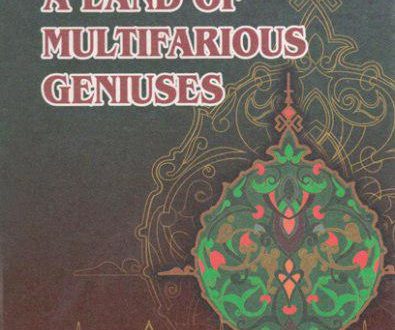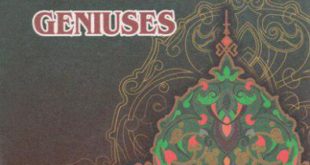Alauddin as-Samarqandi’s followers and students
Alauddin as-Samarqandi was a great master in teaching and educating his students and followers. He educated a number of i mature specialists in the field of Islamic sciences. First of all, he j began to teach his beloved daughter Fatima. He taught her the pronunciation of the Arabic words and ways of reading the Holy
Qur’an, grammar and law. Having studied the secrets of law from her father, Fatima grew up and became a famous lawyer and, in the end, she reached the status of a scholar in the Hanafian law.
One of the greatest lawyers of the ruling period of the Kara-khanid dynasty in Maveraunnahr was Al-Kasani Alauddin Abu Bakr ibn Mas’ud ibn Ahmad (died in 587/1191). Alauddin as-Samarqandi was both his teacher and father-in-law.
Al-Kasani left us a precious book titled as “Badon”. As has been mentioned above, this work was written as a commentary on his teacher and father-in-law Alauddin as-Samarqandi’s book “Tuhfat al-fuqaha”. “Badon” was published in Cairo in 1327-28 in I-VII volumes. Being one of the most appreciated and acknowledged sources of the Islamic law, this book was famous not only in the Islamic world but also in the circles of the European lawyers which even today has not lost its importance yet. According to the writings of the European scholar V. Madelung, “This book is a masterpiece of a quality was never reached subsequently in the Hanafian legal literature”.
Al-Kasani also wrote another book in the field of theology titled as “As-Sultan al-mubin fi usul ad-din”. He is also supposed to have written tafsir to the Holy Qur’an but it is unknown whether this work has reached us or not.
Alauddin as-Samarqandi’s another student and devoted follower was a well-known scholar among the learned people Ziyauddin Muhammad ibn al-Husain ibn Nasr ibn Abd al-Aziz al-Bandaniji al-Navsukhi.
Muhammad al-Bandaniji was one of the greatest lawyers of the ruling period of the Karakhanids in Maveraunnahr and a respected teacher of the author of the book “Al-Hidaya” Burhan ad-din Abu-l-Hasan ibn Abu Bakr ibn Abdu-l-Jalil al-Fergani al-Marghinani ar-Rihdani (died in 593/1197). He taught Burhan ad-din al-Marghinani the science of Hadiths and law. As the author al-Laknavi informs us, in 545/1150-51, in the city of Marv Burhan ad-din al-Marghinani addressed him for permission to study and deliver lessons on his book “Sahih Muslim”. The fact that Bandaniji was one of the teachers of al-Marghinani may be proved by the writings of al-Laknavi that “Bandanij was one of the cities of Fergana”. Supposedly, in 545/1150-51, Muhammad al-Bandaniji seems to have attended lessons on law and the style of law delivered by Alauddin as-Samarqandi.
Abu Sad Abdul Karim ibn Muhammad ibn Mansur at-Tamimi al-Marvazi (1112-1167) was born in Marv. He was a representative of the Arabic tribe Sam’an that was settled in Central Asia. Samani was a famous ethnographer, geographer and historian of his time. He was an author of some scientific works. According to the information provided by Hajji Khalifa (Katib Chelebi) in his book “Kashf az-zunun”, Sam’ani left the following works: “Mu’jam al-mashayikh”, “Amali”, “Tirazu-l-mazhab fi odobi-t-talab”, “Tuhfat al-musafir va-l-manasik”, “Al-Mu’jam al-kabir”, “Duhul al-hammam” and “Kitab al-ansab’. Among these books, “Kitab al-ansab” or “Ansabi Sam’ani” which deals with the geography and ethnography of the East is a precious source of its kind. Containing eight volumes, this book was written in Samarkand in 1156. A rare copy of its manuscript is preserved in the British museum and in the “Kaprulu” library in Istanbul. Before writing this book, as-Sam’ani had visited many cities of Maveraunnahr such as Khorasan, Iraq, Syria, Mecca, etc. and collected source materials from the local inhabitants. In this book, the author writes the following lines about his teacher Alauddin as-Samarqandi: “He used to live in Bukhara permanently and in the fields of fatwa, munazara, usul, and kalam he was great and had no equal. He permitted me to study and analyze his book “Kitab al-ansab””. “Kitab al-ansab” used to attract the attention of the scholars of the later periods as well. As a result of this attention, this book was republished several times in different parts of the world. For instance, it was first published in 1219 by a publisher Ibn Asir under the title of “Al-Lubab” which consisted of 3 volumes. In 1469, “Al-Lubab” was reedited and published in a shortened form under the title of “Lobb al-Lubab fi tahrir al-ansab”. A copy of “Lobb al-Lubob” in the Arabic language is preserved in the scientific library of the Institute of Oriental Studies named after Abu Rayhan Beruni of the Academy of Sciences of the Republic of Uzbekistan (under the code of 1805).
 Imom Buxoriy xalqaro ilmiy-tadqiqot markazi bukhari.uz
Imom Buxoriy xalqaro ilmiy-tadqiqot markazi bukhari.uz











